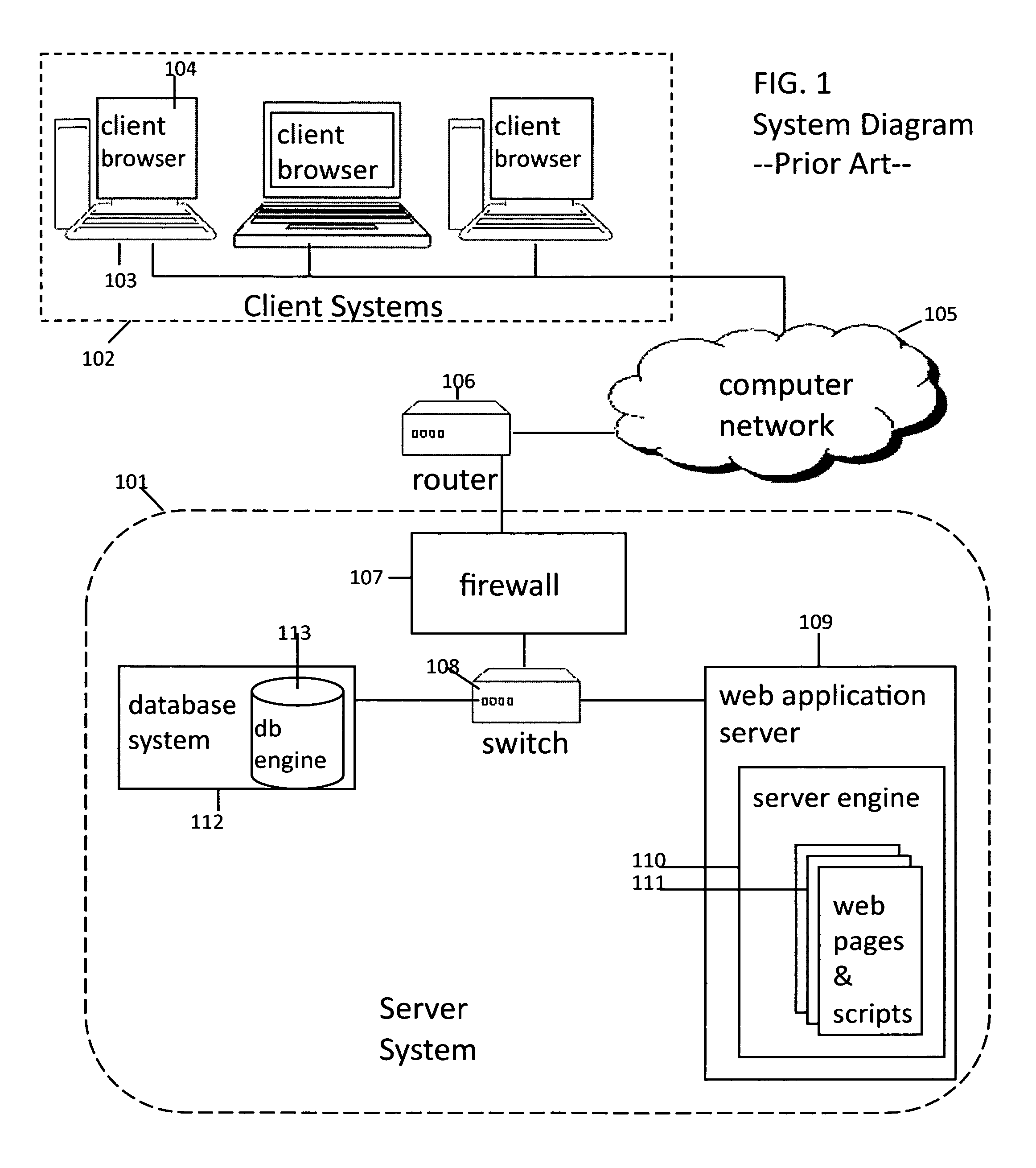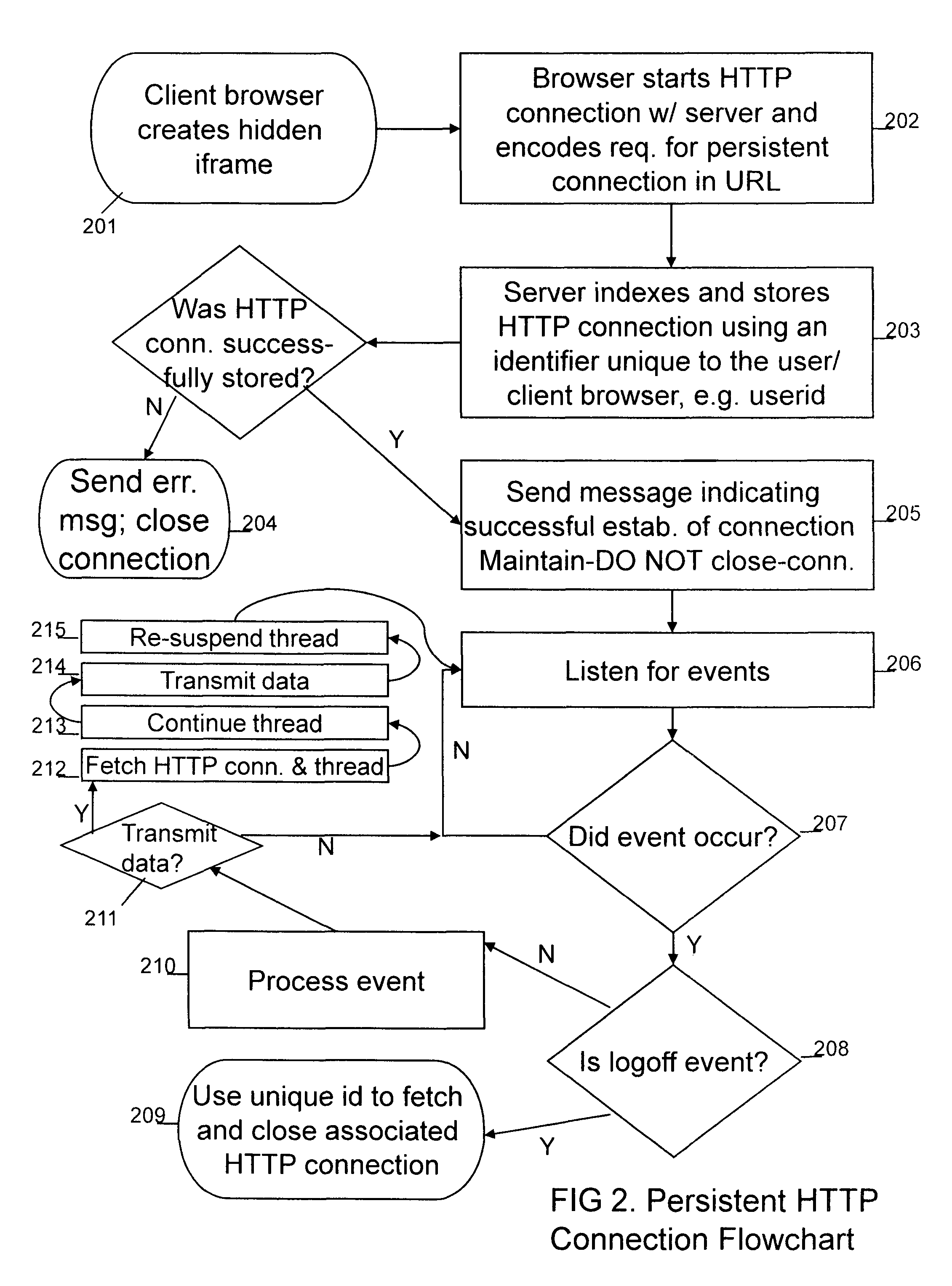System and method for real-time, multi-user, interactive and collaborative environments on the web
a technology of interactive and collaborative environments and systems, applied in the field of system and method for real-time, multi-user, interactive and collaborative environments on the web, can solve problems such as no sense of presence among users, no emerging sense of interactive or collaborative potential, and users' actions can come into potential confli
- Summary
- Abstract
- Description
- Claims
- Application Information
AI Technical Summary
Problems solved by technology
Method used
Image
Examples
first embodiment
The system diagram illustrated in FIG. 1 shows the two main systems of the first embodiment, the server system (server) 101 and the client systems (client) 102, connected through a computer network 105. The computer network 105 may be any public or private network that supports common protocols like TCP / IP, such as the Internet. Information packets between the server system 101 and client systems 102 are forwarded over the computer network 105 through a router device 106. All incoming information packets to the server system 101 must first pass through a firewall 107 which helps prevent unauthorized access to the server system 101. Authorized information packets are then shuttled via a switch 108 which helps route information packets on the server system's intranet 101. As shown in FIG. 1, all of the devices within the server system's intranet 101 are connected to the switch 108, thereby allowing the devices to communicate with any other device in the server system 101. The various ...
PUM
 Login to View More
Login to View More Abstract
Description
Claims
Application Information
 Login to View More
Login to View More - R&D
- Intellectual Property
- Life Sciences
- Materials
- Tech Scout
- Unparalleled Data Quality
- Higher Quality Content
- 60% Fewer Hallucinations
Browse by: Latest US Patents, China's latest patents, Technical Efficacy Thesaurus, Application Domain, Technology Topic, Popular Technical Reports.
© 2025 PatSnap. All rights reserved.Legal|Privacy policy|Modern Slavery Act Transparency Statement|Sitemap|About US| Contact US: help@patsnap.com



